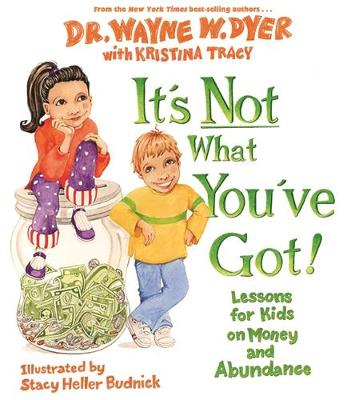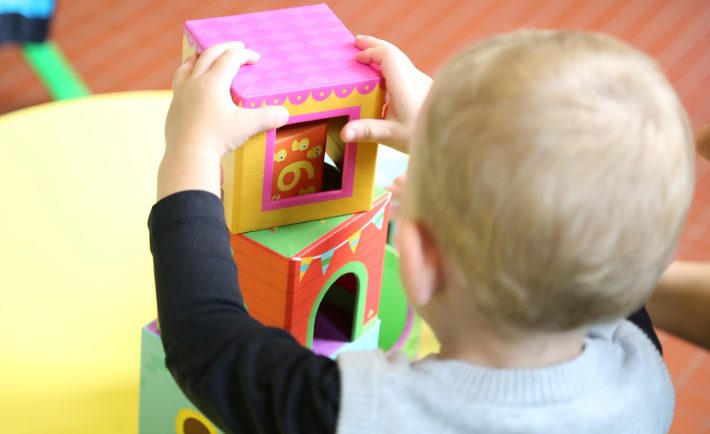Dear parents, guardians, and caregivers, this is written specially for you. Are you looking for some resources on how to teach kids about money and abundance? New York Times best-selling authors Dr Wayne W. Dyer and Kristina Tracy have a book for you to share with the little ones.
If you think you haven’t been a good role model in money management, you might want to rewrite the situation by introducing some money-related life lessons for your children. Especially with the upcoming Chinese New Year, teachable moments from “angbaos” will present itself.
Here are 10 lessons from the book titled “It’s Not What You’ve Got!: Lessons for Kids on Money and Abundance”. Share with your children to help them cultivate positive perspectives on money and life in general.
#1: You’re not what you’ve got!
It’s easy to fall into the cycle of comparison. While having more toys and beautiful clothes matter, remind your child that they are not defined by the things they possess. Without that latest remote control car or that lovely barbie doll, they are still precious little beings on earth!
#2: Live within your means
As much as these are tips for kids, we would like to believe that there are learning points for everyone too. Some adults struggle with difficulties living within their means. The authors wrote this essential takeaway in their book:
“Don’t spend more than you make. Using money that’s not yours can be a big mistake.”
Isn’t this a potent reminder to have no matter the age? However, even more so for kids, you must instil in them the practice of spending within their limits from a young age. Let them know it’s okay to dream big and have goals, but encourage them only to buy what they can afford and work towards the rest.
#3: It doesn’t matter what others have
One will never be happy by yapping on non-stop about what others have. The truth is that there will always be people who have more and others with much less. Jealousy gets nowhere! Getting mad entertaining such recurring thoughts is probably a waste of time and energy.
#4: You have the power to get what you want
Instead of squandering valuable time away being sour, highlight to your kids that they hold power to get what they want. Are you curious as an adult too? Well, it all boils down to the power of the mind.
Do you know that an average person has 6,000 over thoughts a day? Thoughts can become actions, and actions can give way to results. Don’t underestimate an optimistic opinion because it can turn into something huge!
If you’ve heard your children telling you that they want to be wealthy when they grow up, don’t just dismiss it as a silly idea. Tap into their imagination and let them tell you the steps they need to take to become rich. It’s never too early to delve into the finest of details.
#5: Money does not create happiness
Adults who’ve had the chance to interact with the younger generation may come across some “money-minded kids”. Some adults are like that too. While money is necessary to live in this expensive world, it cannot buy certain unmeasurable luxuries like family love and genuine happiness.
Tell your children that mountains of money may bring temporary happiness but not deep-rooted joy. Even households with a little money can still lead fulfilling lives. Money is not the main contributing factor to happiness, and the little ones need to know that.
#6: Every job is important
How you treat people around you can reveal a lot to your kids. Do you respond respectfully to the server at the restaurant? Or do you yell at the customer service representative over the phone when something goes wrong?
Children are like monkeys because they see and do accordingly. As responsible adults, you want to pave the way for kids to understand that every job is important. While some may not be as glamourous, they still have an influence on our economy.
#7: Follow your dreams
To walk the talk, you have to be a parent who believes. We’ve seen many adults who scoff at their kids’ dreams after hearing it firsthand. Those who do it at family gatherings ought to reflect on the impact of their actions.
A dream is never too big or too small. But it’s definitely personal! Whether your child aspires to be a pet groomer, a celebrity, or a lawyer, don’t be a wet blanket. As the authors rightly point out, what your child does to earn money is their choice to make. It’s their life to live after all, and you can’t always be with them every step of the way.
#8: There is plenty enough for everyone!
The writers are talking about abundance here. When a kid sees another kid having more than they have, they may start to wonder if there’s enough to go around. Let them know that there’s plenty of life’s gifts for everyone! And there will be even more for those who work hard for it.
#9: Enjoy what you’ve earned
Hard work and rewards often go hand in hand. Parents and guardians who want to use this as a teachable moment can do so in terms of giving extra pocket money. Let the kids help out with household chores and provide them with a dollar to add to their piggy banks if it’s a job well done.
If your child decides not to add it to their piggy bank, don’t sweat over it. They’ve worked hard to earn the little reward so let them decide how they should spend it. But of course, there’s no harm in sharing with them the benefits of having savings over the long term. Just don’t nag at them.
#10: Abundance means more than money
Abundance is not a word associated just with money. Sometimes, the greatest treasures on earth are those that money can’t buy. Richness can come in the form of excellent health, loyal friends, and loving family members!
Have a closure to the reading session
We’ve come to the end of the list of 10 lessons. Hope you’ve found them thought-provoking. The book ends with several questions you can use to follow-up with your kid’s reading session. Here’s a glimpse of it:
- Why do you think it’s important to save and use your own money for something you want? How do you feel when you use your own money to buy something?
- To get what you want in life, it helps to picture it clearly in your mind—down to the littlest detail. Describe something you want to do, be, or have. What does it look like? How will you make it happen?
- What is something important that you’ve learned about money from reading this book? Do you see now how money is not something that is good or bad but will always be a part of your life? Do you understand what money can and can’t do? Knowing these answers will help you have a healthy relationship with money throughout your whole life!
Get the book on Amazon if you want your child to benefit from the abovementioned lessons: “It’s Not What You’ve Got!: Lessons for Kids on Money and Abundance”.
















